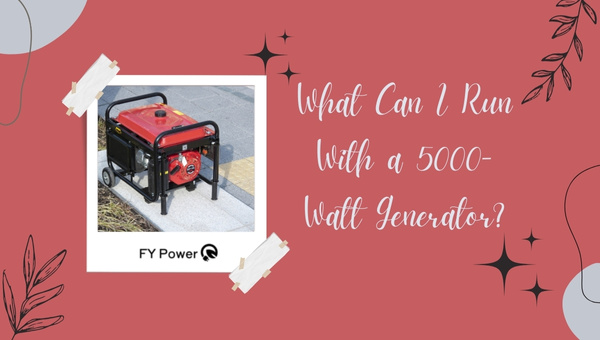Maintaining your Ryobi generator is essential to ensure it performs optimally when you need it the most. One key aspect of generator maintenance is ensuring your spark plug is in good working condition. In this guide, we’ll discuss the importance of the Ryobi Generators spark plug gap and socket size.
The spark plug gap plays a crucial role in the performance of your generator. A gap that’s too small may lead to poor fuel combustion, while a gap that’s too large could cause ignition problems or even damage the spark plug.
To avoid these issues, it’s essential you set the correct spark plug gap for your Ryobi generator. Additionally, using the proper socket size will make spark plug removal and installation a breeze.
What is a spark plug gap & why is it important?
A spark plug gap refers to the distance between the center electrode and the ground electrode of a spark plug. This gap plays a crucial role in an engine’s combustion process, as it allows the electric charge to jump from one electrode to another, sparking the fuel-air mixture.
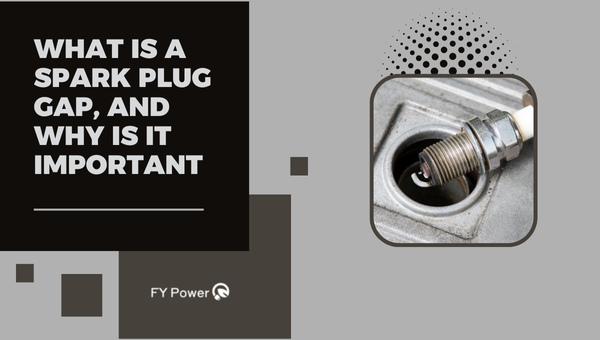
An incorrect gap can lead to various engine problems, such as hard starting, misfires, poor fuel economy, and even engine damage.
There are a couple of factors to consider when setting the spark plug gap:
- Manufacturer recommendations: Ryobi provides specific gap settings for their generators, which you should follow for the best results.
- Engine conditions: The spark plug gap may need to be adjusted based on engine modification, age, wear, and other factors.
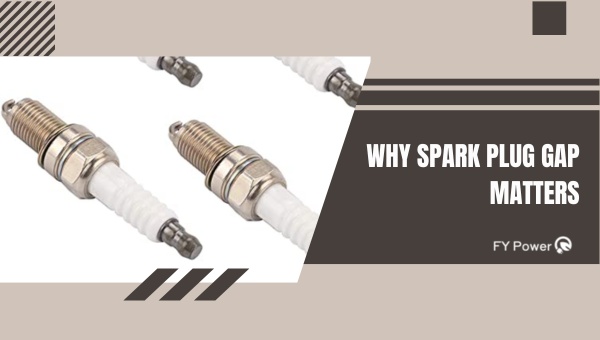
Importance of Correct Spark Plug Gap
- Improved Engine Performance
- Smoother engine performance
- Improved fuel combustion
- Enhanced power output
- Better Fuel Efficiency
- Less fuel consumption
- Reduced emissions
- Extended engine life
- Longer Spark Plug Lifespan
How to measure & Adjust the spark plug gap on your Ryobi generator?
This section will guide you on how to adjust the gap on your Ryobi generator spark plug.
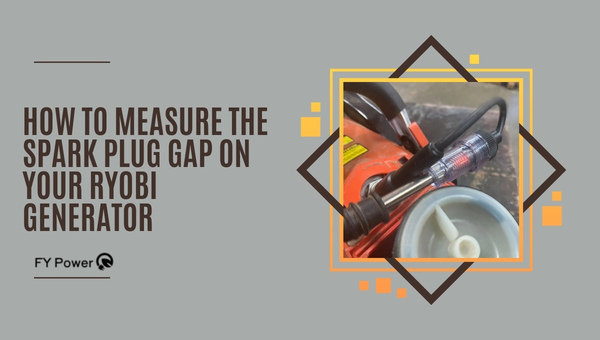
Step 1: Gather the Necessary Tools
Before starting, gather the necessary tools for this task. Here’s what you’ll need:
- Spark plug gap tool (commonly a wire-type gap gauge or feeler gauge)
- Spark plug socket (usually between 5/8 to 13/16 inches)
- Ratchet wrench
- Protective gloves
Step 2: Locate the Spark Plug and Remove It
First, ensure that your Ryobi generator is turned off and cooled down. Then, locate the generator’s spark plug. It’s typically located on the side of the engine, between the recoil starter and the engine block. Use the spark plug socket and ratchet wrench to remove the spark plug carefully. Always wear protective gloves to avoid injuries.
Step 3: Measure and Adjust the Spark Plug Gap
Before adjusting the gap, refer to your Ryobi generator’s user manual to find the correct gap specification. Most Ryobi generators require a spark plug gap between 0.024 to 0.030 inches (0.06 to 0.076 cm), although some models may have slightly different requirements.
Now, use the spark plug gap tool to measure the gap between the center and ground electrodes on the spark plug. To adjust the gap, gently bend the ground electrode (the curved one) closer to or away from the center electrode until you reach the specified gap size. Be cautious not to apply too much force, as this can damage the spark plug.
Step 4: Reinstall the Spark Plug
Once you’ve adjusted the gap, carefully reinstall the spark plug into your Ryobi generator. Use your spark plug socket and ratchet wrench to tighten the plug but avoid over-tightening, as this can cause damage to the cylinder head or spark plug itself.
With the correct spark plug gap and a clean, well-functioning spark plug, your Ryobi generator should now run efficiently and reliably. It’s always a good idea to check the spark plug gap as part of your regular maintenance routine to ensure optimal generator performance.
Read Also, Guide To Champion Generators Spark Plug Gap and Socket Size
Different types of spark plugs for Ryobi generators
Here are some of the different types of spark plugs available for Ryobi generators:
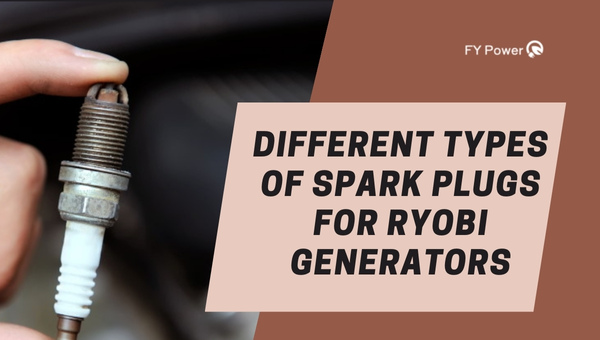
Standard Spark Plugs
Standard spark plugs are commonly used with small engines and are designed to provide efficient combustion between the electrodes. They are typically made from nickel alloy and copper core materials.
Resistor Spark Plugs
Resistor spark plugs feature an internal resistor to reduce electrical interference from other components in the generator or the environment. This type of plug is ideal for reducing noise levels within the generator system.
Platinum Spark Plugs
Platinum spark plugs offer improved longevity by contributing extra runaway heat resistance due to their platinum center electrode tip. These plugs also promote better fuel efficiency as they ignite fuel more quickly than standard spark plugs.
Iridium Spark Plugs
Iridium spark plugs are designed with an ultra-fine tip that offers enhanced performance due to their highly durable structure and low voltage requirements.
These plugs can handle higher temperatures making them a good choice for those seeking increased performance from their generator engine.
The socket size needed for different models of Ryobi generators
The socket size needed for different models of Ryobi generators depends on the type and gap of the spark plug. For example,
RYOBI 900 Watt Inverter Generator (RYI911LP)
Spark Plug
- Type – CMR6A (TORCH) or equivalent
- Gap – 0.024″– 0.028″ (0.6-0.7mm)
- Socket size – 5/8″ (16mm)
RYOBI 1000 Watt Inverter Generator (RYI1000)
Spark Plug
- Type – A7RTC (NHSP LD) or equivalent
- Gap – 0.024″– 0.028″ (0.6-0.7mm)
- Socket size – 5/8″ (16mm)
RYOBI 2050 Watt Inverter Generator (RYI2022VNM)
Spark Plug
- Type – BPR7HS (NGK) or equivalent
- Gap – 0.024″– 0.028″ (0.6-0.7mm)
- Socket size – 13/16″ (21mm)
RYOBI 2300 Watt Inverter Generator (RYI2322)
Spark Plug
- Type – BPR7HS (NGK) or equivalent
- Gap – 0.024″– 0.028″ (0.6-0.7mm)
- Socket size – 13/16″ (21mm)
RYOBI 2200 Watt Inverter Generator (RYI2200GR)
Spark Plug
- Type – BPR7HS (NGK) or equivalent
- Gap – 0.024″– 0.028″ (0.6-0.7mm)
- Socket size – 13/16″ (21mm)
Read, All Predator Generators Spark Plug Gap and Socket Size Guide
Recognizing the Signs of a Bad Spark Plug
Knowing when it’s time to replace your Ryobi generator spark plug is crucial in ensuring the proper functioning of your generator. A bad spark plug can prevent your generator from starting, cause it to run poorly, or even damage the engine.
Here are some telltale signs that your spark plug may need to be replaced:
1. Hard starting or not starting at all: If your generator is having trouble starting or won’t start up, it may be due to a faulty spark plug. The spark plug might be fouled or worn, preventing it from igniting the fuel properly.
2. Rough idle and poor performance: When your generator is idling or running at a lower RPM, a bad spark plug can cause the engine to run rough and vibrate excessively. Additionally, you might notice a drop in performance, such as reduced power, fuel efficiency, or inconsistent operation.
3. Engine misfires: Misfires can be caused by worn or damaged spark plugs, which result in incomplete combustion. This will usually be accompanied by a check engine light or an audible misfire from your generator’s exhaust.
4. Carbon deposits or fouling: Inspect your spark plug for carbon deposits or fouling, which can occur when the plug is exposed to oil, fuel, or even dirt. A fouled spark plug will struggle to ignite the fuel properly, leading to reduced output and efficiency.
Replacing your spark plug at the recommended intervals is essential to guarantee the best performance and longevity. Check your Ryobi generator’s owner’s manual for the suggested maintenance schedule, specific spark plug gap, and socket size information.
How to Replace a Ryobi Generator Spark Plug?
Maintaining your Ryobi generator’s spark plug is crucial for its performance and longevity. If you’re facing difficulties in starting the generator or experiencing a decrease in efficiency, it might be time to replace the spark plug. In this section, we’ll walk you through the steps to easily replace your Ryobi generator spark plug.
Step 1: Gather the Necessary Tools and Spark Plug
Before you begin, it’s essential to have the required tools and a compatible spark plug on hand. You’ll need the following:
- A spark plug socket: typically 13/16 inch (20.6 mm) or 3/4 inch (19.1 mm), depending on the model
- A socket wrench
- A spark plug gap tool
- A compatible spark plug for your Ryobi generator
Step 2: Turn Off and Disconnect the Generator
Safety comes first! Make sure your generator is turned off and disconnected from any power source before proceeding. Allow the engine to cool down to avoid burning yourself.
Step 3: Locate the Spark Plug
On your Ryobi generator, the spark plug is usually situated near the engine’s exhaust. Consult your owner’s manual for the exact location of your specific model.
Step 4: Remove the Spark Plug Boot
Gently grasp the boot (the protective rubber cover) and pull it straight off the spark plug. Be careful not to tug on it too forcefully, as there’s a risk of damaging the wire.
Step 5: Unscrew the Old Spark Plug
Using the spark plug socket and wrench, turn the old spark plug counterclockwise to unscrew and remove it from the engine.
Step 6: Check and Set the Gap on the New Spark Plug
Refer to your owner’s manual for the correct spark plug gap specification, and use the gap tool to measure and adjust the gap on the new spark plug accordingly.
Step 7: Install the New Spark Plug
Thread the new spark plug into the engine by hand, ensuring it’s properly seated. After that, use the socket wrench to tighten it, but don’t overtighten it, as it may cause damage. A good rule of thumb is turning an extra 1/2 turn once the gasket touches the engine.
Step 8: Reattach the Spark Plug Boot
Carefully slide the boot back onto the new spark plug, making sure it’s securely seated.
There you have it! You’ve successfully replaced your Ryobi generator spark plug by following these steps. Regular maintenance and timely spark plug replacement will help ensure your Ryobi generator’s optimal performance and longevity.
Check, A Guide To Yamaha Generators Spark Plug Gap and Socket Size
Safety considerations when working with a spark plug from a generator engine
Here are some tips for staying safe when working with a spark plug from a generator engine.
- Make sure the area around the generator is clear of combustible materials such as gasoline, oil, or wood.
- Wear protective clothing such as gloves and goggles when handling the generator engine.
- Keep your hands away from the spark plug while the engine is running.
- Check all connections regularly to ensure they are secure and free of corrosion or debris that could create sparks.
- Inspect the spark plug regularly for signs of wear or dirt accumulation that could cause sparking.
- If you notice any sparking, shut off the engine immediately and inspect it for any problems before restarting it again.
- Have a fire extinguisher nearby in case of an emergency situation involving sparks from the generator engine.
By following these safety tips, you can help ensure that your work with a generator engine is safe and successful!
Conclusion
Changing the spark plugs in your generator is an easy process that can be done with just a few tools. You should have no trouble replacing old spark plugs with new ones with the proper socket, ratchet or wrench, extension bar, and anti-seize lubricant.
Additionally, it’s important to take safety precautions when working around sparks from a generator engine, as they could potentially start a fire if not handled properly.
Following these tips shown in this guide will help you ensure that you are able to safely and successfully measure spark plug and socket size and change out the spark plug on your generator!
We have provided all the information you need to know about the spark plug gap and socket size, and we hope that you have found your answer in this guide.
